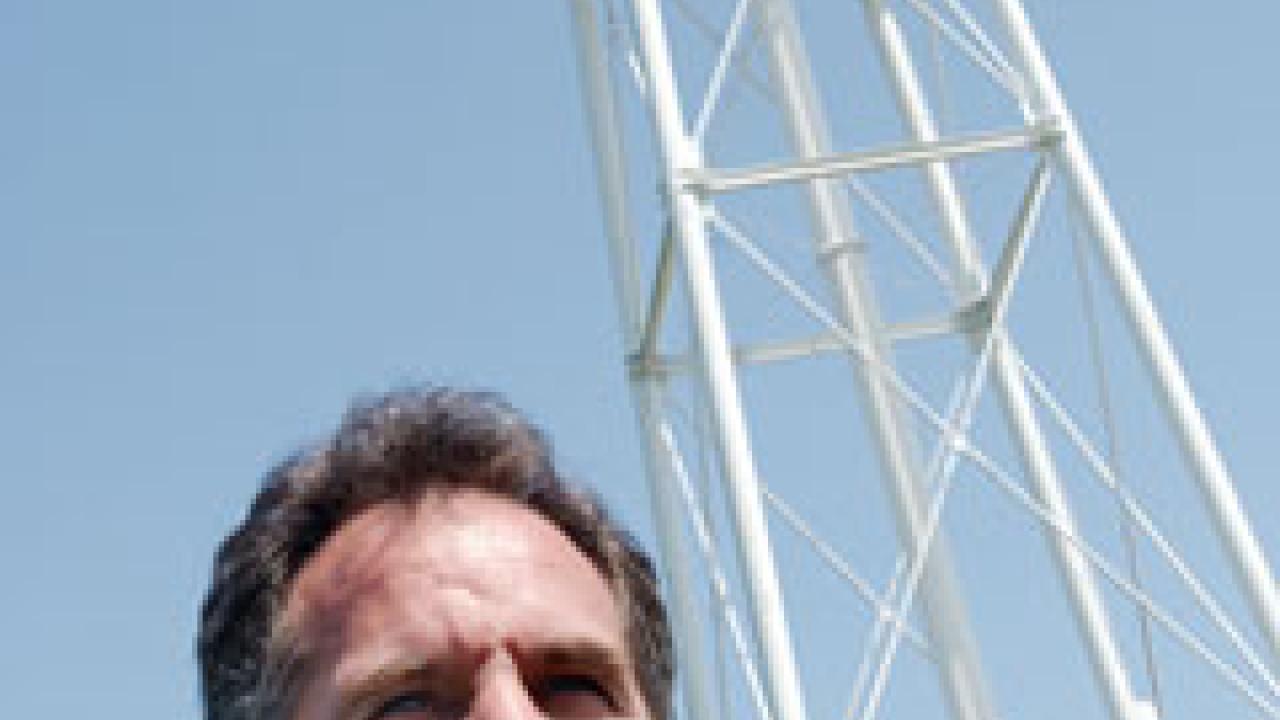Repair leaking roofs. Replace power and sewer lines. Patch peeling plaster. Upgrade air-conditioning, heating and ventilation systems.
Fix-it lists at UC Davis are getting longer. As the budget tightens and administrators face tough decisions about spending priorities, deferring maintenance can seem like the least painful choice. Not to be mistaken for regular maintenance, deferred maintenance is work that gets carried over from year to year because funds are not available.
One problem is that long-deferred maintenance on aging buildings has gotten little state money and simply is not as inherently appealing as making a contribution to a shiny new construction project.
UC Davis has an estimated $300 million backlog of deferred maintenance projects, said Kathleen Moore, associate vice chancellor for Facilities, Operations and Maintenance. But the campus's budget this year for deferred maintenance is about $2.5 million, she added.
Stan Nosek, vice chancellor for administration, describes the issue of deferred maintenance as the "classic pay me now or pay me later" situation.
"If you fail to replace a roof that is beyond its life expectancy," said Nosek, "patching here and there, and simply wait for it to fail, then you have to deal with the cost of the roof and the additional damage that failure results in."
Nosek said the good news is that dialogue is occurring at the UC systemwide level on the deferred maintenance issue.
"Everyone seems to fully understand the urgency of the need," he said. "The reality of the state budget circumstance makes it highly unlikely that significant dollars will become available to us any time soon."
What the campus can afford now is basically to respond to areas in facilities that are literally breaking down, Moore said. "People like to have new buildings open, but one area that gets overlooked is taking care of the facilities already existing in a way that prevents larger repair bills down the road."
Moore said that UC Davis' teaching and research programs depend on adequate facilities and are adversely affected when systems or buildings fail or need repairs. Her unit maintains more than 12 million gross square feet of campus space (in more than 1,200 buildings) with 8 million, or 60 percent, maintained with state and/or student fee funds.
Since 2000, the campus has added more than 700,000 gross square feet in new state eligible buildings, but facilities has to maintain them with the same budget that was available in 2000-01, Moore said. That's roughly equivalent to a 15 percent reduction in funding.
"The significant growth in the capital building program on campus has resulted in an incremental shifting of cost to the maintenance budget," she explained. "Since state funds are not sufficient to fully cover the capital needs of the campus, certain costs that in the past were funded by the capital program have been shifted to maintenance funds.'
She said that this includes a reliance on limited deferred maintenance funds to help shore up the capital program.
The light at the end of the tunnel, she says, could come with another statewide bond measure in the future that would pay for deferred maintenance costs in higher education.
The list of deferred maintenance projects for the 2003-04 year includes 37 projects, ranging from replacing the fire alarm system in Hutchison Hall to installing new irrigation to prevent soil erosion in the east end of the UC Davis Arboretum.
Joseph Stagner, director of the campus utilities program in facilities, said the lack of maintenance shows up unexpectedly sometimes. "Any time you have a power outage somewhere on campus," he said, "it's probably due to not having the money to upgrade power lines.'
Other areas of pressing concern, Stagner said, include the poor condition of the central heating systems and cooling plant chillers. Roads and bike paths are increasingly becoming problem areas, he added.
Everson Hall, one of the older instructional buildings on campus, has up to $2 million of deferred maintenance issues alone, Moore said.
Nosek added that campus leadership continues to make every effort to use discretionary dollars to make improvements in deferred maintenance. He praised maintenance workers, custodians, groundskeepers and mechanics for the quality of their service despite tight funding.
"Given the demands on facilities staff employees, I think they really have done an excellent job."
